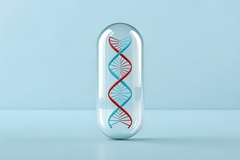A functional mushroom for everything? Solidifying standards to drive industry forward

04 Aug 2022 --- As the functional mushroom industry is shrooming into the mainstream, industry expects the space to start solidifying standards around the quality of ingredients and products available on the market. NutritionInsight speaks to Tony Shields, founder and CEO of Canada-based FreshCap, on the main drivers and developments across the space.
“Consumer awareness about mushrooms and their benefits will continue to grow, and we will see more products developed that contain functional mushrooms. We will also start to see standards being developed around the quality of the mushroom ingredients,” he says.
“The part of the mushroom used, the extraction method, the levels of active compounds in the final product – all of these are critical to the end benefit, and consumers do not have reliable standards to recognize the differences.”
Growing pains The functional mushroom space is experiencing “growing pains.”
The functional mushroom space is experiencing “growing pains.”
Functional mushrooms have different benefits, but one thing that unites them all is their immune-supporting properties, Shields adds.
“In 2020, consumers became more aware of the importance of immune health, and that has been a major driver in mushroom supplement adoption.” Brain health has been another major driver of mushroom use.
“The most popular mushroom by far is Lion’s Mane, which is used primarily for cognitive benefit. With functional mushrooms having such a broad range of benefits, there is a mushroom to support almost every health goal.”
With the “thriving” industry come growing pains, Shields notes. “The different ways in which mushrooms are sourced and processed results in a huge range of product quality. This can make it difficult for end consumers to make informed decisions on the products they take.”
“Consumer education can go a long way in overcoming this problem. More informed consumers will look for higher quality products.”
Lab vs. farm
Typically, functional mushrooms can either be grown “on grain” in a lab or grown on hardwood at a farm, Shields explains.
“Products made from mushrooms grown on grain have high levels of starch in the final product, as a result of not being able to separate the grain. Products that are made from farmed whole mushrooms do not have starch and have high levels of active compounds.”
Additionally, mushroom mycelium can also be grown in liquid fermentation, which results in a pure mycelium product that can also have high levels of actives, he adds.
Often, mycelium will be grown on grain in a sterile environment. “It’s like the roots of a plant growing around a bunch of kernels of grain (rice or oats). Using this method of production, it is impossible to separate the mycelium and the grain in the final product. This results in a final product that is high in grain starch and low in active compounds.”
“If the fruiting body is used, the end product consists entirely of mushrooms with no grain fillers and is high in active compounds.”
Industry standards
Standards could evolve around which part of the mushroom was used (mycelium vs. the fruiting body), whether or not it contains any grain or if it is pure mushroom, mushroom mycelium, or a combination.
There could also be standards developed around levels of active compounds, specifically beta-glucan. “Beta-glucan is easy to test for, so manufacturers should be able to express the levels of beta-glucan in their product and print it on the label,” Shields underscores.
Consumers should look for beta-glucans and triterpenes on the level to indicate the level of active compounds in the product. For individuals seeking pure mushrooms, they should check the label to ensure there aren’t any fillers listed as “other ingredients.”
According to Shields, not all mushroom products are extracted –some are just dried and powdered. “To really get the benefits, the mushrooms should be put through an extraction process,” he says. Mushrooms can be hot water extracted, alcohol extracted or a combination of both. The extraction method can have an impact on the final product.
The extraction method can have an impact on the final product.
Hot water extraction is used to extract the beta-glucans and make them more bioavailable. Alcohol extraction is used to pull out the fat-soluble compounds in mushrooms, specifically the triterpenes in Reishi and Chaga. “Dual extraction is usually done by first performing an alcohol extraction, then a hot water extraction, and combining the final result into a single, dual extracted product.
Psilocybin: supplements or pharma?
Currently, there is a growing volume of research on the use of psilocybin for mental health, with some experts eyeing the ingredient as a potential rival to pharmaceutical drugs. On whether it can be integrated into supplements, however, Shields notes: “It is hard to say, and really depends on how the legal framework will be developed.”
“We are already seeing unregulated supplement products being sold that contain small amounts of psilocybin along with other functional mushrooms like Lion’s Mane. These are intended for ‘microdosing’ in which the effects of the psilocybin are meant to be sub-perceptual.”
More likely though, psilocybin will be regulated as a pharmaceutical and will not be incorporated into the supplement industry, Shields underscores.
By Andria Kades












